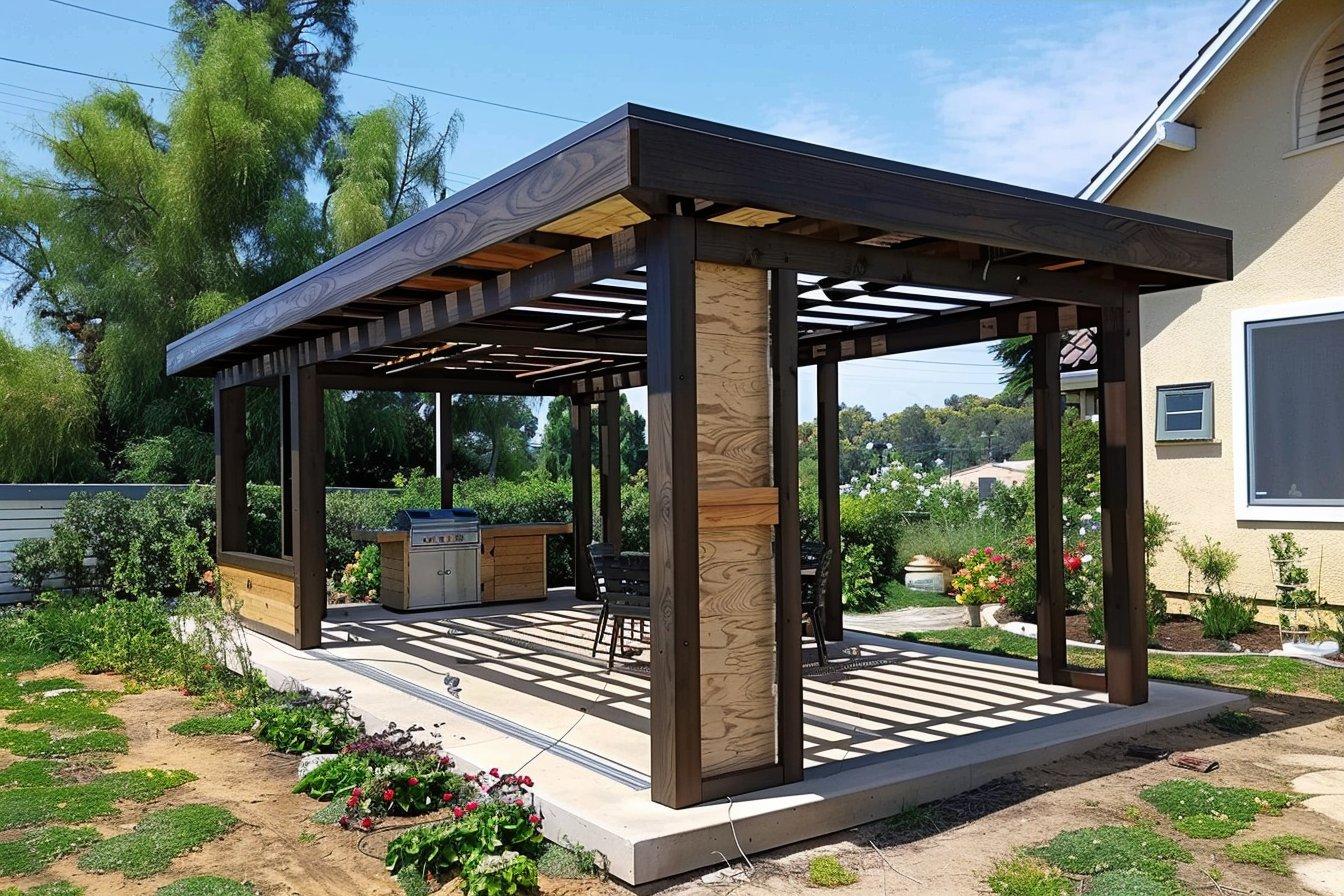Exploring Custom Pergolas: Options, Costs, and Design Ideas for Your Outdoor Space
Custom pergolas have become an increasingly popular feature for homeowners looking to enhance their outdoor living spaces. These elegant structures not only provide much-needed shade and shelter but also elevate the aesthetic appeal of a garden or patio. With the variety of materials, designs, and customization options available, creating the perfect pergola that complements your style and functional needs has never been more accessible. Let's dive into the world of custom pergolas, understand their options, and discover how to transform your backyard into an inviting retreat.

Understanding Custom Pergolas: What Makes Them Unique?
Custom pergolas stand apart from standard, off-the-shelf options in several important ways. The primary distinction lies in personalization—custom designs are created specifically for your space, taking into account the unique dimensions, architectural style of your home, and your personal preferences. This tailored approach ensures the pergola integrates seamlessly with your existing landscaping and home design rather than appearing as an afterthought.
Custom pergolas also offer flexibility in functionality. Whether you desire a structure primarily for shade, to support climbing plants, to define an outdoor dining area, or to create a framework for outdoor curtains or lighting, a custom design addresses these specific needs. Additionally, custom pergolas can incorporate unique architectural elements like curved beams, decorative end cuts, built-in seating, or integrated planters that simply aren’t available in standard models.
The construction quality of custom pergolas typically surpasses that of pre-fabricated options, with attention to detail in joinery, finish quality, and structural integrity that ensures longevity and durability in various weather conditions.
How Much Does a Custom Pergola Cost?
The cost of a custom pergola varies significantly based on several factors, including size, materials, design complexity, and whether you choose professional installation or DIY construction. On average, homeowners can expect to pay between $2,000 and $10,000 for a professionally designed and installed custom pergola, though high-end designs with premium materials can exceed $15,000.
Material selection heavily influences cost—cedar and pressure-treated pine pergolas typically range from $25-$50 per square foot, while hardwoods like ipe or mahogany can cost $50-$75 per square foot. Aluminum pergolas generally fall in the $50-$65 per square foot range, while vinyl options cost approximately $30-$60 per square foot. For the ultimate in durability and low maintenance, fiberglass pergolas command premium prices of $60-$90 per square foot.
Size is another major cost factor. A small 8×8 foot pergola might cost $2,000-$3,000, while a larger 12×18 foot structure could range from $5,000-$8,000 depending on materials and design complexity.
| Material Type | Average Cost per Square Foot | 10x10 Pergola Cost Range | Lifespan | Maintenance Level |
|---|---|---|---|---|
| Pressure-Treated Wood | $25-$35 | $2,500-$3,500 | 10-15 years | Medium |
| Cedar | $30-$50 | $3,000-$5,000 | 15-20 years | Medium |
| Hardwoods (Ipe, Mahogany) | $50-$75 | $5,000-$7,500 | 20-30+ years | Low-Medium |
| Vinyl | $30-$60 | $3,000-$6,000 | 20-30 years | Very Low |
| Aluminum | $50-$65 | $5,000-$6,500 | 30+ years | Very Low |
| Fiberglass | $60-$90 | $6,000-$9,000 | 30+ years | Very Low |
Prices, rates, or cost estimates mentioned in this article are based on the latest available information but may change over time. Independent research is advised before making financial decisions.
Materials Options: Choosing the Right Material for Your Pergola
Selecting the appropriate material for your custom pergola involves balancing aesthetics, durability, maintenance requirements, and budget. Each option offers distinct advantages worth considering:
Wood remains the most popular choice for its natural beauty and traditional appeal. Cedar and redwood are naturally resistant to insects and decay, making them excellent choices for outdoor structures. They weather to an attractive silver-gray patina over time but require regular sealing every 2-3 years to maintain their appearance and integrity. Pressure-treated pine offers affordability but generally requires more maintenance and lacks the natural beauty of cedar or redwood.
For those seeking minimal maintenance, vinyl pergolas provide an attractive alternative. Though initially more expensive than some wood options, vinyl won’t rot, warp, split, or require staining. However, some homeowners find vinyl lacks the warmth and character of natural materials.
Aluminum pergolas offer exceptional durability, corrosion resistance, and virtually no maintenance. These lightweight structures are ideal for areas with high winds or severe weather. Modern aluminum pergolas often feature powder-coated finishes available in various colors to complement your home’s exterior.
Fiberglass represents the premium end of pergola materials, offering extraordinary strength, dimensional stability, and weather resistance. Though the most expensive option initially, fiberglass requires minimal maintenance and can last decades without deterioration, potentially offering better long-term value.
Designing Your Custom Pergola: Key Considerations
Creating the perfect custom pergola requires thoughtful consideration of several design elements that will determine both its aesthetic appeal and functionality. Begin by establishing the primary purpose—whether it’s creating an outdoor dining space, a lounge area, a cooking station, or simply defining a transition zone in your landscape.
The pergola’s size and proportions should be determined not only by available space but also by how the structure will be used and how it relates to surrounding elements. As a rule of thumb, allow at least 2 feet of clearance around outdoor furniture to enable comfortable movement. Height is equally important—most residential pergolas range from 8 to 12 feet tall, with the ceiling height determined by the scale of your home and desired level of airiness.
Roof design significantly impacts both aesthetics and functionality. Traditional open-lattice designs provide dappled shade while maintaining airiness. Adjustable louvered systems offer versatility, allowing you to control sun exposure. For maximum protection, consider adding weatherproof panels or retractable canopies that can be deployed during inclement weather.
Don’t overlook accessory integration during the design phase. Plan for lighting (string lights, recessed fixtures, or pendant lights), ceiling fans for air circulation, privacy screens, and climbing plant supports if desired. These elements are easier to incorporate during initial construction rather than as afterthoughts.
The Benefits of Installing a Pergola in Your Outdoor Space
Installing a custom pergola delivers numerous advantages that extend beyond simple aesthetics. First, these structures create defined outdoor living spaces without the expense of fully enclosed additions. By establishing visual boundaries, pergolas help organize your landscape and create purposeful zones for dining, entertaining, or relaxation.
From a practical standpoint, pergolas provide adaptable shade protection from harsh sunlight. Unlike solid roofs that block all light, pergola designs allow you to customize the degree of sun exposure through slat spacing or retractable covers. This light-filtering quality creates a pleasant microclimate beneath, reducing temperatures by 5-15 degrees on hot days while still allowing gentle light to filter through.
Property value represents another significant benefit—research indicates that well-designed outdoor living spaces can return 50-80% of their cost in increased home value. Custom pergolas specifically contribute to this by enhancing curb appeal and extending functional living space.
Environmentally, pergolas can reduce energy costs by shading windows and doors during summer months, decreasing cooling demands. When designed to support climbing plants, they contribute to biodiversity by providing habitat for beneficial insects and birds while improving air quality.
Finally, custom pergolas offer exceptional versatility through the seasons. In summer, they provide welcome shade. In spring and fall, they create comfortable transitional spaces protected from light rain or excessive sun. Even in winter, pergolas with adjustable covers or sides can extend outdoor enjoyment by blocking wind and light precipitation while allowing beneficial sunlight to warm the space.
By carefully considering materials, design elements, and intended use, a custom pergola can become the centerpiece of your outdoor living strategy, delivering value and enjoyment for many years.



